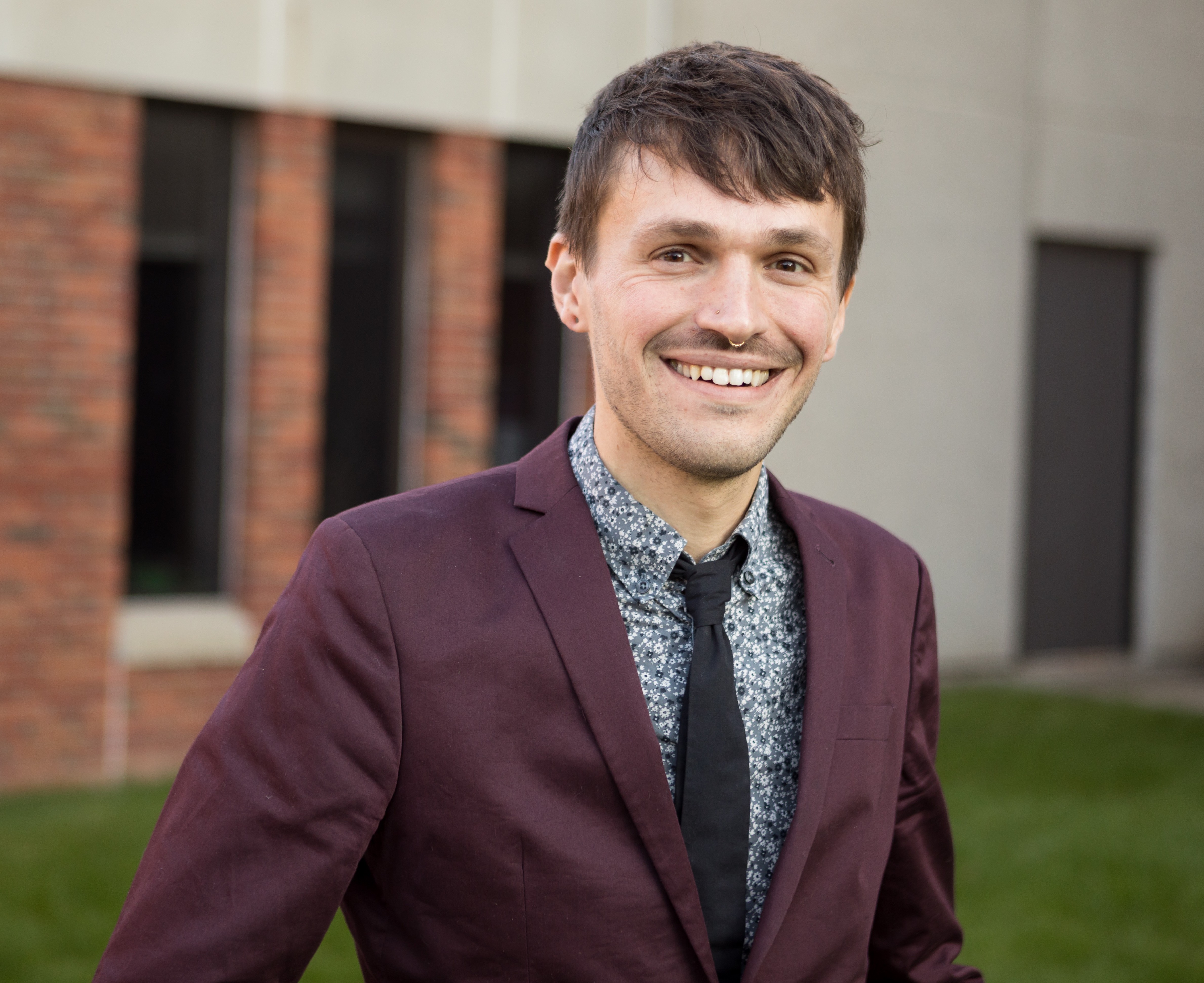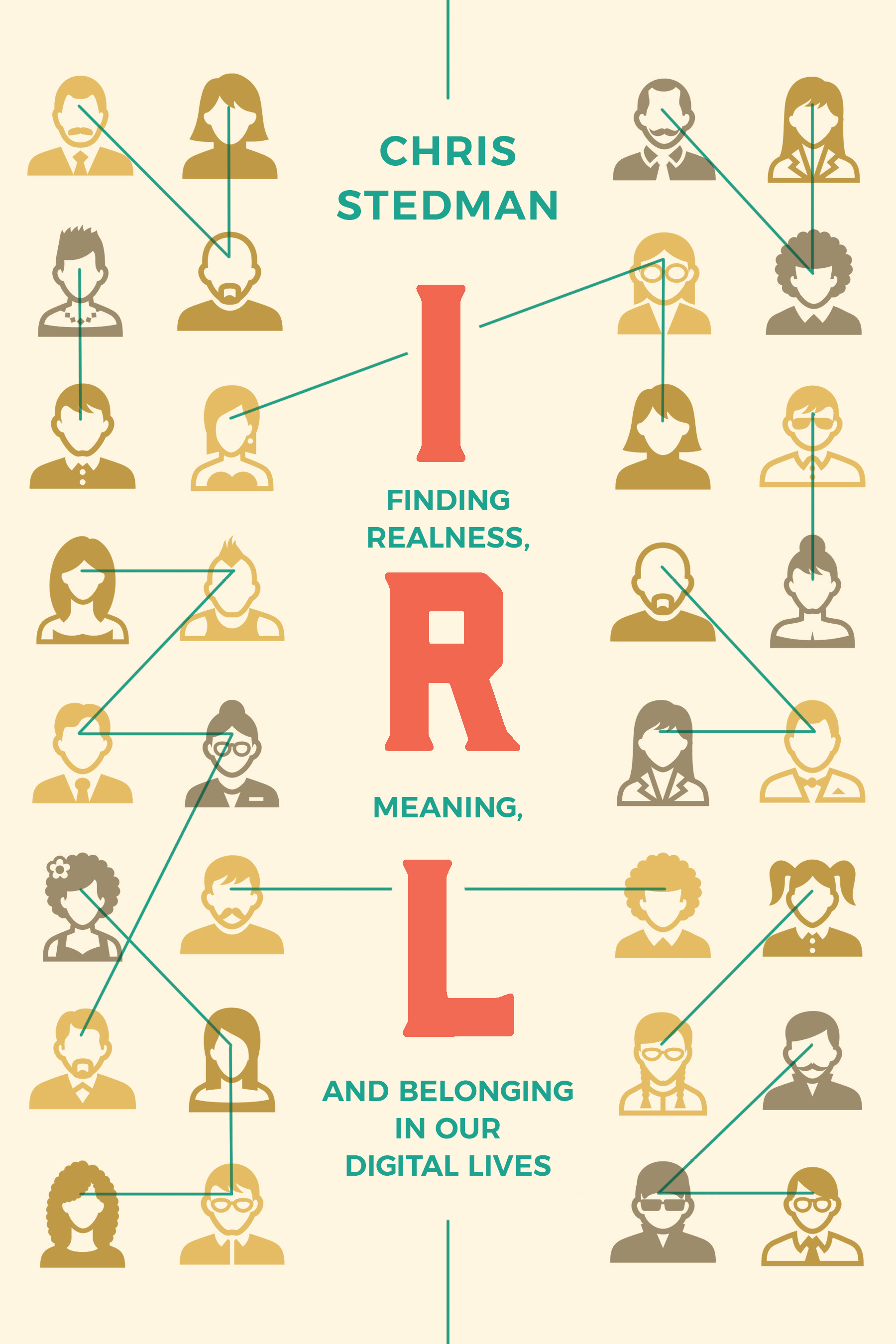Meet Author Chris Stedman


Chris Stedman is a Minneapolis-based writer, speaker, and community organizer. He is the author of IRL: Finding Realness, Meaning, and Belonging in Our Digital Lives (2020) and Faitheist: How an Atheist Found Common Ground with the Religious (2012). Chris has appeared on CNN, MSNBC, and PBS and has written for publications including the Guardian, the Atlantic, BuzzFeed, Pitchfork, VICE, USA Today, the Huffington Post, the Rumpus, the LA Review of Books, and the Washington Post.
Previously the founding director of the Yale Humanist Community and a fellow at Yale University, Chris also served as a humanist chaplain at Harvard University. He currently teaches in the Department of Religion and Philosophy at Augsburg University and serves as the Network of ELCA Colleges and Universities' 2020–2021 visiting lecturer.
I first encountered Chris Stedman through Twitter. He had come across my book No House to Call My Home at a bookstore in North Carolina and sent me a direct message introducing himself. I read his first book, Faithiest, and was deeply moved by his searching and intelligent account of what it means to be a gay man growing away from God and the importance of finding common ground.

In Stedman’s new book, IRL: Finding Realness, Meaning, and Belonging in Our Digital Lives, he cements his position as a powerful cultural critic and gifted author. Here Stedman challenges the conventional notion that a life lived on social media is necessarily superficial or less "authentic" than so-called "real life." Drawing from research and his own experiences, Stedman provides a nuanced account of how digital spaces both gratify and confound the human need for connection, authenticity, and community.
***
Tell me about the origin of IRL: Finding Realness, Meaning, and Belonging in Our Digital Lives, Chris.
I started writing what would eventually become this book during a tumultuous time in my life. My long-term relationship ended, my job ended, and I moved across the country by myself. Everything in my life was changing. Suddenly, after years of feeling like I had nothing more to say beyond my first book, I had all these things I wanted to express and explore. Rediscovering your desire to write when your life is falling apart—so original, I know. Anyway, I’m sure this will surprise no one, but those initial pages didn’t wind up in the book. I was just doing a lot of emotional purging at that point. Eventually, after I’d done enough of that, I made my way to what I actually needed to write about, which became the driving question of the last several years of my life: what does it mean to be “real” in the time of Twitter and Tik Tok?
When I started working on the book, I was feeling split between all that personal tumult and the fact that my social media posts were making it seem as if my life was “business as usual.” This split sent me down the rabbit hole of wanting a better understanding of how “real” my online presentation was and what the things I was and wasn’t sharing said about how I understand myself. What’s funny to me now is that in those early pages I wasn’t fully aware I was writing about the internet. I knew I was reflecting on the search for realness, but the material was unfocused. I was calling it The Velveteen Habit then, which is actually the title of IRL’s afterword and probably the single thing from those early pages that made it all the way to the final book. Anyway, when I stepped back and looked over that initial material—especially once I started working with my amazing agent, Erik Hane at Minnesota’s Headwater Literary—it was so obvious that this wasn’t just a book about the search for meaning and belonging but specifically about what that search looks like in the digital age, because everything I was writing kept coming back to the internet. As soon as I realized what I was actually doing, I was able to set about the investigation properly. This led to several years of reading, research, interviews, and reflecting on my own digital experiences and, eventually, the book as it exists today.
Your Instagram stories of late have been filled with readers commenting on IRL, sharing their favorite sections. Has encountering your readers and hearing their insights taught you anything new about the book?
If I’m going to write something, it’s with the hope that it will be useful. Well, that’s not exactly it. I write to figure out what I think about things. But if that figuring out is just for me and not really relevant to anyone else, then there’s no point in sharing it. A lot of my writing is like that. So while I write to sift through ideas, I only publish if I have some hope that it might be helpful to other people. Hence the eight year gap between books, I guess.
That’s really my only wish for IRL—that it will be a tool for people trying to make sense of the fact that so many of the things that give our lives meaning now happen online. I mean, I’d be lying if I said I didn’t sometimes want some of the things so many writers hope for, like critical acclaim or at least the ability to afford more than a tiny studio apartment. But while those things would be nice, they aren’t enough. The only thing that makes the rolling-a-boulder-up-a-cliff work of creating a book, which is the hardest thing I’ve done twice now, worth it for me is if the final product can be useful to people. I know that sounds like a “if I was granted one wish I’d wish for world peace” kind of answer, but it’s sincere. Everyone’s motivation is going to be different, but that’s the only one that works for me. Also, if I was granted one wish, I’d totally wish for world peace.
IRL is an amazing combination of personal narrative and cultural commentary. To make sense of your internal world at times you seem to turn to the external—children’s books, literature, tarot readers, clinical psychologists, poets. Can you talk about how you used the marriage of the observed and the personal in crafting IRL?
Thank you! This book was a fun challenge for me, because it’s very different from my first. Well, it wasn’t always fun, but even in its most difficult moments it was at least gratifying. While my first book was largely first-person memoir, this one draws not only on personal experiences but also on research, reporting, and interviews. There’s a lot more analysis and commentary, too, which took a lot of time to think through. Another thing that was different for me is that this book draws on new experiences—things I did specifically because I was writing it, rather than just reflecting on events I had already experienced.
I wanted to draw on a lot of different sources when writing this book, because I think surprise is really important when you’re navigating big, complicated questions. That’s one thing I really appreciated about Flannery O’Connor’s fiction when I first read it in high school; she would upend your expectations and pose questions to you in unexpected, sometimes even shocking, ways. I think people might be surprised that in this book on the internet I spend so much time in a map library, or talking to game makers and going to a Dungeons & Dragons meetup, or reflecting on a tarot reading, or revisiting childhood stories. But I was trying to approach these questions from different angles, with the hope that approaching them in a new way might give readers a new way of thinking about them. At least, that’s what I was trying to do for myself while writing.
But yeah, pulling in all these different elements and making it all coherent was difficult. Honestly when I set about writing this book, once I’d put together my outline and figured out the general direction of it, I wasn’t sure I actually could. I don’t mean that in a self-deprecating way—I just genuinely wasn’t sure I possessed the requisite skills or, all the more, the necessary determination to actually put in the years of work it would require. And there were many crossroads in the process where I could have cut corners, taken shortcuts. So on a personal level I feel really happy that I did what I set out to do, regardless of whether or not it’s even any good, because there were a lot of moments when I wasn’t sure I could actually see it through.
We’ve talked in the past about how the story that needs you to write it comes calling, invited or not. Were there chapters in IRL that hijacked the book when you discovered the importance of writing them?
Initially I was trying to write IRL like my first book, which again was more of a straightforward chronological memoir. My agent helped me see that I was actually writing around these images—maps as a way of exploring how we map our lives online, games as a way of understanding how we play and experiment with identity online, tattoos as a way of examining online permanence and how that’s impacting what it means to be human—but I was trying to wrestle them into a chronological format, which wasn’t working. The images were the through line, not the chronology. So he suggested I try structuring the chapters around these images rather than a chronological timeline, which totally opened everything up and also gave me a kind of structure for moving through the search.
The first part I really dug into after reorienting the project’s structure was the maps chapter, which was a great place to begin my inquiry in earnest. That maps chapter (“Mapping the Territory”) went all kinds of directions I never expected, as all the chapters did. I tried my best to just follow them where they were leading me, and then I cut a lot in edits, though it’s still a longer book than I set out to write. Fortunately, my wonderful publisher Broadleaf felt it should be longer, too.
I was also really intentional and structured about my editorial process. My agent and I did a round of edits on the book first, then I brought it to an incredible group of readers across different disciplines—a sociologist, a creative writing teacher, an editor at a magazine, a community organizer, a journalist, a nonfiction writer, and others—and put it through a round of edits with them, in documents where they could all see and build on each other’s feedback. And then, after all that, I did edits with my fabulous editor at Broadleaf, Lil Copan.
I did this partially because I’m a bit obsessive—please don’t tell me if you find any typos—but mostly because I knew I was limited by my own experiences and perspective. I wanted to draw on a lot of different viewpoints editing, just as I did in researching and interviewing, to help me see things I missed or things that weren’t working. For example, I totally restructured the last chapter of the book (“Uncertaintweets”) in the round of edits with the group of readers, because it wasn’t working. Based on their feedback I tried another approach, and everything just fell into place. So even though a book is often thought of as something you do alone, IRL is really the product of so many people’s input and perspectives. That’s why my acknowledgements section is so long, which I know people like to make fun of, but I really did have so many people I needed to thank.
The world we live in today is very different from just a few months ago. IRL feels oddly prescient in its insights as we are forced to live more online now than ever. How have your digital habits changed since social distancing became a part of our lives, and how has finding meaning online shifted for you?
I was trying to write a book that would help people sift through what it means to be human in a digital world, but I obviously had no idea that the questions it wrestles with would become some of the defining questions of this year. Again, my hope is that the book can be a tool for people.
I will say that as so much of life has necessarily shifted online this year, I’ve found myself drawing a lot on the things I learned while writing this book. I got so much valuable input and perspective from the books I read as research, the people I spoke with, the experiences I reflected on. I’ve had a much easier time navigating this immensely difficult year as a result of working on this book, so on a personal level I feel really fortunate that the questions I’ve been fixated on for the last few years have ended up being useful. I’ve been referencing it a lot this year, but there’s this line referenced in my favorite books of 2019, Rising by Elizabeth Rush, where she cites a phrase she found in an essay on Alzheimer’s: “sometimes the key arrives before the lock.” That’s what this book has felt like for me.
Near the end of IRL, in one of my favorite sections, you write: “In connection, we become more ourselves. But connection is only half the process of knowing who we are. Disconnection is also essential to being real. We need opportunities to step back and take time alone in order to understand what we’ve gained from loving and from being loved.”
I’ve been thinking a lot about living interdependently rather than independently during the pandemic. It seems contradictory, but as I’m spending more time alone, certain relationships are deepening—through weekly zoom dinners, sharing Tik Toks, and online check-ins. I’ve done away with certain platforms that raise my anxiety and concentrate more on those that foster in me a sense of joy and connection. Many of us received an unprecedented opportunity to step back this year and interrogate what matters most to us. What are your hopes for how we all engage and connect digitally with this new opportunity for pause and reflection?
It does seem contradictory, or at least counterintuitive, but so does the idea that life online can help us come to feel more real instead of less, depending on whether or not we take advantage of the opportunities it offers. One thing I’ve come to feel strongly about digital life is that with all of the immense challenges it has created, it also offers us a huge gift: it has rendered us amateurs. I open IRL with the story of an amateur drag night, which caused me to reflect on how doing something we’re not good at yet can help us see ourselves more clearly. Doing something new gives us a chance to ask ourselves what we’re doing and why. It reveals us to ourselves.
I think this has been true of pandemic life, too. With all of its terror, it has also forced many of us to go back to the drawing board and ask ourselves anew: what do I need in order to feel connected? To feel like myself? And then we have to go about finding new ways of meeting those needs. But that intention is valuable. We’re not just going through the motions—we’re forced to ask ourselves what needs we’re trying to meet and how we might meet them. So if digital life requires us to ask ourselves what really makes us feel connected, understood, and like we’re living a meaningful life, that’s a good thing.
Getting this perspective can even give us a chance to try rebuilding systems that haven’t served us. There are a lot of challenges inherent to life online, especially on platforms driven first and foremost by profit—I get into this in the book, but I think that’s the biggest obstacle we face when trying to feel human online. But the internet also offers many opportunities to ask ourselves questions that are central to the human experience: about who we are, where we belong, what our responsibilities are to one another.
My hope is that IRL invites readers to reflect on those questions and how we use digital tools to go about investigating them. I mean, I also just hope they enjoy reading it. But if it can help people navigate our increasingly fraught digital lives, especially this year, I’ll feel like I’ve done my job.
To learn more, visit chrisstedmanwriter.com.
